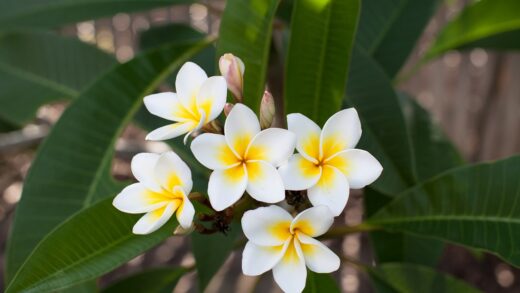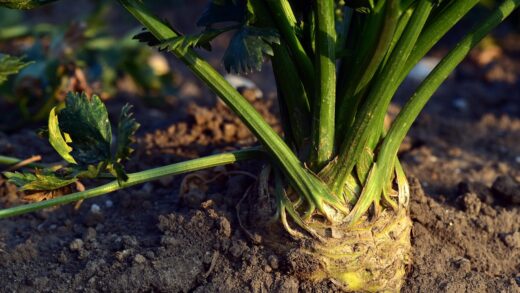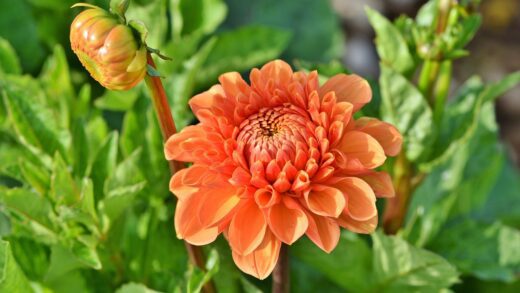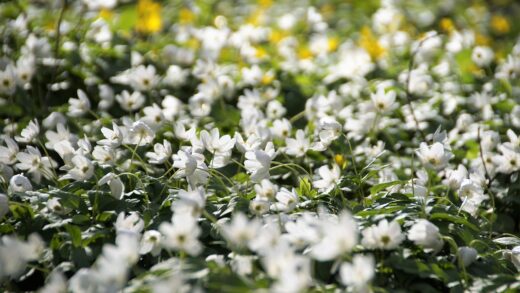In the realm of garden cultivation, rose campion distinguishes itself as a plant of remarkable modesty, particularly concerning its nutrient requirements. This species has adapted to thrive in soils that are average to lean in fertility, a characteristic that is central to its identity as a low-maintenance and resilient garden perennial. Attempting to pamper it with rich soils and frequent fertilization is a common but misguided approach that often leads to suboptimal results. A comprehensive understanding of its minimal needs is therefore crucial for fostering a plant that is structurally sound, floriferous, and true to its charming character.
The core principle of fertilizing rose campion is one of restraint. Its natural habitat does not consist of richly composted, fertile loam, but rather of poorer, often rocky or gravelly soils. As a result, the plant is evolutionarily programmed to perform well with limited nutrients. Providing an excess of fertilizer, especially those high in nitrogen, will stimulate rapid, lush foliar growth. While this may sound desirable, the reality is that this growth is often weak, sappy, and prone to flopping over, detracting from the plant’s naturally sturdy, upright form. Furthermore, this excessive vegetative growth frequently occurs at the expense of flower production, diminishing the very feature for which the plant is most prized.
The most effective strategy for meeting the nutrient needs of rose campion is to focus on improving the soil structure rather than its fertility. The initial incorporation of a modest amount of well-rotted compost or organic matter at the time of planting is typically sufficient to provide for the plant’s needs for several seasons. This single application serves primarily to enhance drainage and soil texture, with the slow release of nutrients being a secondary, albeit beneficial, effect. Beyond this initial soil preparation, ongoing fertilization is rarely necessary and should only be considered in specific circumstances, such as in extremely impoverished or sandy soils.
Ultimately, the goal is not to force rapid, lush growth, but to support the plant’s natural tendency towards sturdy, compact foliage and abundant flowering. An observant gardener will notice that rose campion often looks its best—with the most intensely silver leaves and the most prolific blooms—in conditions that might be considered challenging for other perennials. By embracing this preference for leaner conditions and avoiding the temptation to overfeed, the gardener allows the plant to flourish as nature intended, resulting in a healthier, more structurally sound, and aesthetically pleasing specimen.
Understanding low fertility preference
The rose campion’s preference for soil with low to average fertility is a direct reflection of its evolutionary background. Originating in areas of Southern Europe with thin, often rocky soils, it has adapted to extract the necessary nutrients from a less-than-rich environment. This adaptation is a key aspect of its resilience and low-maintenance nature. In the context of a garden, this means that the plant does not require, and in fact, can be harmed by, the kind of rich, heavily amended soil that many other ornamental plants crave. Providing such conditions is counterproductive to its health and aesthetic appeal.
More articles on this topic
When planted in overly fertile soil, rose campion’s growth habits change for the worse. The primary effect of excess nutrients, particularly nitrogen, is the stimulation of vigorous foliar growth. The plant produces large, soft leaves and long, weak stems. This results in a lanky, sprawling habit, causing the plant to flop over, especially after rain or in windy conditions. The iconic silvery colour of the foliage can also be diminished, appearing more green and less vibrant. This lush growth makes the plant more susceptible to fungal diseases due to reduced air circulation and to physical damage.
Furthermore, this focus on vegetative growth comes at a direct cost to flowering. The plant directs its energy into producing leaves and stems rather than buds and blooms, leading to a disappointing floral display. The flowers that are produced may be smaller or fewer in number. This trade-off is a common biological response in many plants; when resources are abundant, the emphasis is on growth, but when resources are somewhat limited, the plant is triggered to reproduce, resulting in more flowers and seeds. Therefore, a leaner soil actually encourages a better bloom.
For the gardener, this means actively avoiding the addition of rich topsoils, potent chemical fertilizers, or heavy applications of manure to the area where rose campion is planted. The ideal approach is to work with the existing soil, improving its drainage if necessary, but being very conservative with any additions that significantly boost fertility. This “tough love” approach may seem counterintuitive to those accustomed to pampering their plants, but it is precisely what rose campion needs to develop its characteristic sturdy structure and produce a spectacular show of flowers.
Initial soil preparation and amendment
The most appropriate time to address the nutrient needs of rose campion is during the initial preparation of the planting site. While the goal is not to create a highly fertile bed, a one-time amendment with a suitable organic material can provide a long-term, slow-release source of nutrients and, more importantly, improve the soil’s physical structure. The best choice for this purpose is a well-aged, mature compost or leaf mould. These materials release their nutrients gradually over several years and are invaluable for improving both aeration and drainage.
More articles on this topic
When preparing a new bed for rose campion, a modest layer of compost—perhaps one or two inches—can be spread over the surface and worked into the top six to eight inches of soil. This is typically the only soil amendment the plant will need for its entire lifespan in that location. This initial incorporation ensures that the organic matter is distributed throughout the root zone, where it can provide the most benefit. It is crucial to use fully decomposed compost, as fresh materials can be too rich in nitrogen and may actually harm the plant’s roots.
In situations where the native soil is extremely poor, such as in very sandy or gravelly soils that are virtually devoid of organic matter, this initial amendment is particularly important. While rose campion tolerates poor soil, there is a point where nutrient deficiencies can occur. The addition of compost provides a buffer, ensuring that essential macro and micronutrients are available in trace amounts to support healthy basic functions without encouraging excessive growth. This single act of preparation sets the stage for a self-sufficient plant.
After this initial soil amendment at planting time, the focus should shift entirely away from adding nutrients. Subsequent top-dressings with compost or fertilizer are unnecessary and should be avoided. The plant will thrive on the initial preparation and the natural cycling of nutrients in the soil. This minimalist approach not only benefits the plant but also simplifies garden maintenance, reinforcing the rose campion’s reputation as an easy-care perennial.
When and how to fertilize (if necessary)
For the vast majority of garden situations, established rose campion plants will never require fertilization. The initial soil preparation provides an adequate reservoir of nutrients to sustain the plant. However, there are a few specific, and uncommon, scenarios where a very light application of fertilizer might be considered. The primary instance is for plants growing in containers, as the limited volume of soil can become depleted of nutrients over time. Another case may be a plant growing in exceptionally sandy or leached soil where clear signs of nutrient deficiency are visible.
If fertilization is deemed necessary, it should be approached with extreme caution. The signs of a true nutrient deficiency—as opposed to problems from poor drainage or disease—might include uniformly pale or yellowing leaves (chlorosis), severely stunted growth, and a complete failure to produce flowers despite adequate sunlight. It is important to rule out other potential causes before resorting to fertilizer. If a deficiency is suspected, the best option is a very light top-dressing with a balanced, slow-release granular fertilizer, such as a 5-10-5 or 10-10-10 formula, in the early spring as new growth begins.
The application rate should be minimal, significantly less than what would be recommended for more demanding perennials. A small handful scattered around the base of the plant, avoiding direct contact with the crown and foliage, is more than sufficient. This should then be gently watered in. Alternatively, a thin layer of fresh compost can be applied around the plant, which will provide a milder and more gradual release of nutrients. Liquid fertilizers are generally too potent and fast-acting for rose campion and should be avoided as they can easily lead to the problems associated with over-fertilization.
It must be reiterated that these measures are corrective and not routine. Fertilizing rose campion should not be part of the annual garden calendar. In a healthy garden ecosystem with well-prepared soil, the plant will source what it needs without any supplemental feeding. The decision to fertilize should be a response to a clear and diagnosed problem, not a standard practice. In almost all cases, withholding fertilizer is the best course of action for this plant.
Recognizing signs of nutrient imbalance
Being able to identify the signs of nutrient imbalance, particularly over-fertilization, is more important for the successful cultivation of rose campion than knowing when to feed it. The symptoms of excessive nutrients are quite distinct. The most obvious sign is overly lush, soft, and leggy growth. The stems will be weak and unable to support the weight of the foliage and flowers, leading to a sprawling, untidy appearance. This is the plant’s response to an overabundance of nitrogen, which promotes rapid cell elongation.
Another clear indicator of too much fertility is a change in the foliage colour. The characteristic beautiful, silvery-white hue of the leaves, which is caused by a dense covering of fine hairs, will be greatly reduced. The leaves will appear more green, larger, and less felted. This diminishes the ornamental value of the foliage, which is one of the plant’s key attractions, particularly when it is not in bloom. This change indicates that the plant is allocating resources to creating larger leaf surfaces for photosynthesis rather than developing its adaptive, water-conserving features.
A poor flowering display in a plant that appears otherwise large and healthy is another classic symptom of over-fertilization. If a mature rose campion plant in a full-sun location is producing abundant foliage but few or no flowers, an excess of nitrogen in the soil is the most likely culprit. The plant is in a vegetative growth mode and has not received the environmental cues—such as a slight nutrient stress—to switch to its reproductive flowering mode.
If the signs of over-fertilization are observed, the corrective action is to cease all supplemental feeding immediately. If the issue is due to overly rich soil, the problem is more difficult to resolve. One could try to amend the surrounding area with sand or grit to dilute the nutrient concentration over time. Often, the best course of action is simply to allow the plant to deplete the excess nutrients from the soil over a season or two. It is also wise to refrain from deadheading in this situation, as allowing the plant to set seed can help it expend some of its excess energy.


















